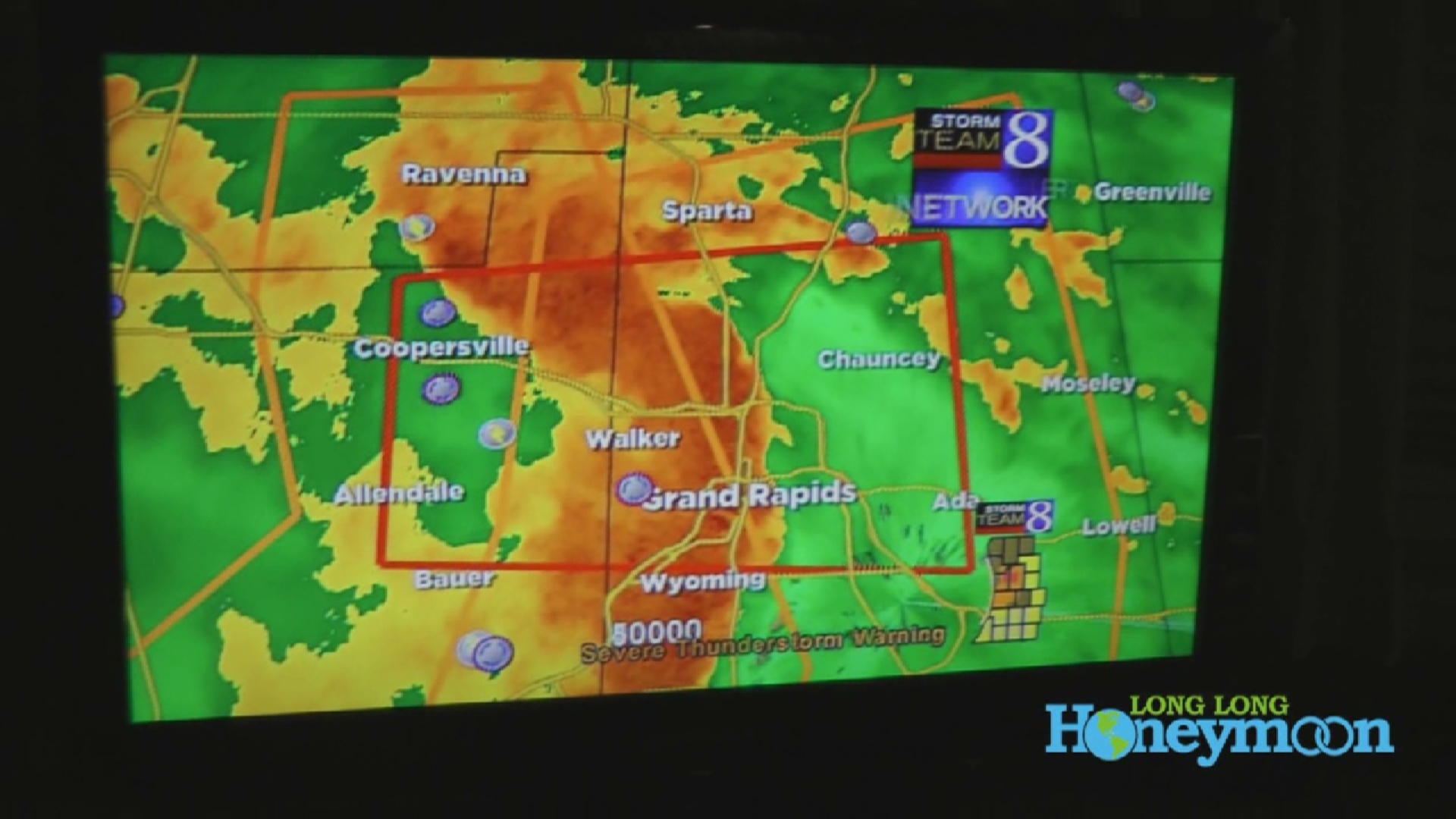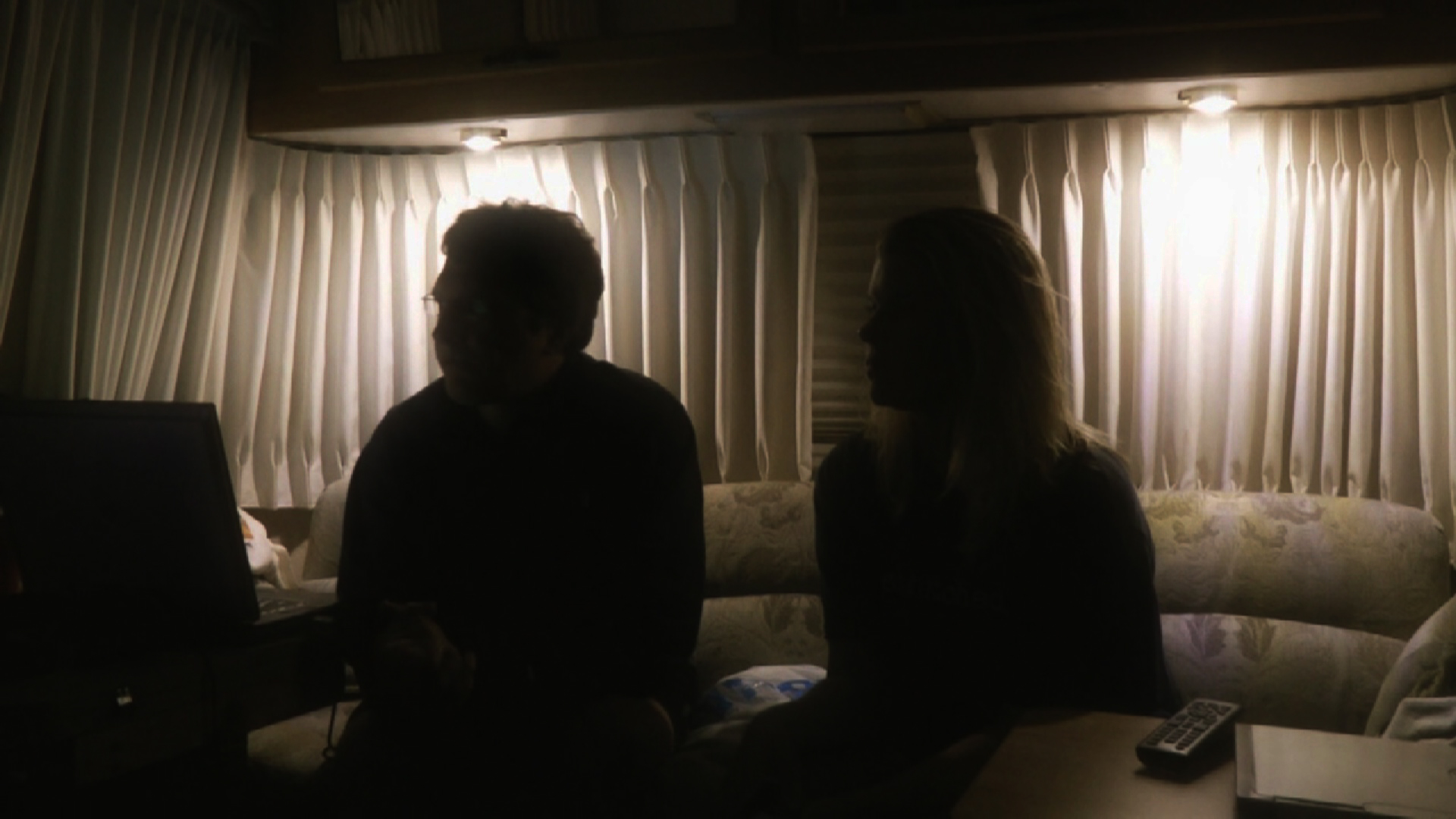Severe weather and camping go together like ice cream and motor oil. RVs and emergency weather are simply not a good combination. In fact, they are a really bad combination, and a recipe for disaster. Sure, RVs are comfortable, cozy, and fun. They’re a fine and adventurous method of seeing America. In most everyday situations, they are totally safe. But they are NOT storm worthy.
VIDEO: UNBOXING OUR NEW MIDLAND WR300 WEATHER RADIO
Although my natural instinct is to find humor in any situation, this is one topic that calls for some seriousness. In recent years there have been tragic situations where weather (both floods and tornadoes) has devastated campgrounds, killing people in the process. It’s obvious but it bears repeating. After a while, we tend to treat our “homes on wheels” as homes, and while technically they are homes that doesn’t make them safe in a storm. I have yet to encounter an RV with a basement. In many tornado situations, your best chance of survival is to be below ground.
We’ve experienced a few harrowing storms while camping in our Airstream. Sure, a little rain creates a nice pitter patter sound effect on the rooftop. Even a powerful rainstorm with heavy rainfall can be pleasant and memorable. But a windstorm? That’s a different ball of wax. Suppose a tree gets blown into your RV? (Check out our video for the likely result.) The outer shell will crack like an egg. And what about floods? It may sound bizarre, but many campers have encountered flash flooding. We’ve camped next to rivers on several occasions. With enough rainfall, rivers swell. As you might imagine, RVs don’t fare too well when pitted against torrential waves of water. When you encounter flood waters, never try to cross. Your best bet is to seek higher ground and wait for the water to recede.
I have somewhat fond memories of the lightning storm we experienced on the Gulf coast of Florida, when a gust of wind snapped our ceiling fan cover COMPLETELY OFF the camper in a torrential downpour. We taped a plastic bowl to the ceiling to keep our interior dry. In hindsight, that was a “fun” memory. But I have much LESS fond memories of the storm we survived in Michigan. The two words no camper ever wants to hear: tornado warning. We heard those words uttered by a local TV weather guy after midnight, in a campground somewhere in Michigan in the vicinity of Grand Rapids (about an hour’s drive from the coast).

This is the way the weather radar looked for us, one sleepless night in a Michigan campground – our first tornado warning while RV camping.
“A tornado has been spotted in this area tonight,” Kristy said. “What should we do?”
“I don’t know,” was my honest reply. “We don’t even know where we are. If we leave, we might just drive straight into the tornado.”

We didn’t know where to go for storm shelter, so all we could do was watch the TV weather guy. Thankfully, we kept electricity through the night.
It may sound strange, but when you travel fulltime around the United States in an Airstream, sometimes you aren’t sure exactly where you’ve stopped for the night. The Michigan TV weather guy was speaking in terms of counties, but we didn’t even know in what county we’d stopped. Needless to say, we learned a lesson.
VIDEO: PROGRAMMING THE MIDLAND WR300 WEATHER RADIO
That’s why we got a weather radio. While a weather radio won’t exactly protect you from bad weather, at least it gives you fair warning. It will also keep you updated as events unfold. With battery backup power, the radio will continue broadcasting even if the storm knocks out your electricity.
After browsing several different models, we chose the Midland WR300. Note that ours cost about $50, but you can find units for much cheaper (less than $20). These small handheld ones would probably do the trick; we forked over a little extra cash for the AM/FM functionality and SAME alerts. With SAME (specific area message encoding) technology, you can limit weather alerts to situations in your immediate area. (Without SAME, you may get buzzed with a weather alert for a place that’s 100 miles away.)
I’m including a link to our chosen radio in this page. There are MANY different models of weather radio, but to me this one seemed to offer the most features for the price. You may prefer a different model, but this one seems to be well regarded by most reviewers. We’ve found that it does exactly what it promises. My favorite feature is the big “on” button. Just push the big button any time of day, and you’ll get a weather report. It’s useful in this respect every day, no matter if the weather is severe or not. Of course, if severe weather is approaching, the radio barks to life on its own with an alert. Note that you can adjust its sensitivity so that it only awakes for truly life threatening events (and not every single thunderstorm that passes through your area).
OUR WEATHER RADIO:
In addition to a weather radio, you need a PLAN OF ACTION, and you need to formulate it ahead of time. Your best strategy is to ALWAYS have some sort of idea WHERE TO GO in the event of severe weather. Most (albeit not all) campgrounds have some sort of brick-and-mortar shelter that will be safer than any RV. The downside is that you may end up spending a few hours, or even an evening, inside a laundry room, bathroom, or the like. But considering the alternative, it’s the wise course of action. If the campground does not have adequate shelter, you need to find out what the community provides. Many communities have some sort of freely available storm shelter for citizens.
Again, the key is to think about these issues when you are settling in to your campsite. When you are checking into a campground, ask the folks at the front desk. You need to know BEFOREHAND so that you are ready to take action when severe weather strikes. Sometimes these storms pass through at 4:00 AM. If your weather radio bounces you out of bed in the middle of the night, you need to know what to do.
TEN SEVERE WEATHER SAFETY TIPS FOR RV TRAVELERS
1. Get a NOAA weather radio (and put charged backup batteries inside it).
2. Develop a disaster plan for you and your family.
3. Identify a safe place for you to take storm shelter.
4. Know the county in which you are visiting, so that you can get accurate weather information.
5. It only takes two feet of water to float away most cars, so do not drive into a flooded area.
6. Respect severe thunderstorm winds, as they can reach speeds of 100 to 150 MPH (faster than some hurricanes).
7. 30/30 Rule – if the time between lightning strikes and thunder is less than 30 seconds, you need to take shelter.
8. Do not try to outrun a tornado in a vehicle; instead you should take shelter immediately.
9. If caught outside during a tornado, lie flat on the ground and cover your head with your hands – most deaths and injuries during a tornado are caused by flying debris.
10. No place is totally safe during a tornado, but your best option is usually underground.
Click here to launch the NOAA Severe Weather Preparedness Guide

That is a great video. I really wasn’t aware that you could get weather alerts so specific to your area! The best part , amazingly (for us anyway) is that IT’S AVAILABLE IN CANADA too :-).
Thanks! I’m gonna start doing more videos like this one, checking out products that are of interest to campers.
Getting a weather radio has been on our “to do” list ever since the terrible storm in Michigan last year. We made it through the storm just fine, but it was a sleepless night — and we later learned that a tornado had struck in the next county! From now on, we’re going to have a severe weather plan.
Hi Sean.
I realise I’m a little late to the party here. (like that’s a big stretch) but I thought I’d throw in the link to the Canadian equivalent available through good ole Environment Canada. Took a bit of sifting….
http://ec.gc.ca/meteo-weather/default.asp?lang=En&n=1CD5BDF2-1
You’ll need to copy and paste it into your browser thingy I’m afraid.
(For whenever you head back up to the Great White North….:)
Cheers.
Bob.
Ah…no, I see it’s a “clickable” link. Cool. Just doesn’t open up in a new window is all….
Thanks Bob! That is good to know.